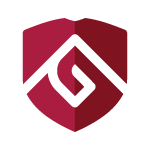Learning in person – interacting face-to-face with an instructor and other students – is not a new idea: for most of human history, it was the only educational idea.
One of the first established schools, Plato’s Academy, employed the concept of argumentative dialogue, with learning arising organically from inquiry, discussion, and debate. The Greek philosopher Plato founded The Academy in Athens in the 4th century B.C.E. It attracted scholars from far and wide, not only to learn, but to experience the joy of learning, in an environment where dialogue was encouraged, heated discussions were the norm, and probing the unknown was held up as the ideal. The community afforded by the school was an essential element then and remains a vital part of a research university today.
Those of us who work in higher education experience the magic of learning on a daily basis on our campuses: the “Eureka!” moments of discovery in a laboratory; the spark of awareness in a student’s eyes when a new concept is encountered; being transported by a musical performance.
It always strikes me that members of our campus communities come together for one purpose, but interact in so many different ways, in all the ways humans do when they are together. So much of a learning community is serendipity, unplanned – and so much of our learning happens not only inside, but outside of classrooms and seminars. Students on our physical campuses learn through encounters in our residence halls, in our outdoor spaces, in student centers. All are essential elements of stimulating our imaginations, thinking as broadly as we can, realizing that we are, as a community, weaving a fabric. The fabric has different colors and directions in its threads, but comes together to create the magical tapestry that is a university.
We lost some of this magic on our physical campuses starting last spring, when the COVID-19 pandemic forced us to move to remote modalities. And we suffered from those losses. Our faculty, students, and staff did an outstanding job adapting, but there’s no doubt we are hungry to come back together. That’s our plan starting this month, with careful attention to health protocols to minimize risks of illness.
As I describe the benefits for students of a residential campus, I want to be clear that CSU Global, our online university, fills a critical niche for many modern learners. (Actually, even Plato’s Academy had remote participants – they wrote letters back then!) For CSU Global students, online modalities are essential and highly valued avenues for degree attainment. For many students, degree completion is possible only when higher education can be successfully managed along with work, family, and community responsibilities. That’s exactly why CSU Global’s enrollment has exploded since it launched in 2008 as the nation’s first fully online and fully accredited public university. Its expertise in the delivery of online courses has been especially notable during the pandemic, and CSU and CSU Pueblo greatly benefited from Global’s experience last spring.
Bottom line, our different campuses fill educational needs for different students. That’s why in Fort Collins and Pueblo, and all across the state where CSU learning happens, we are determined to rejoin physical communities that spark the magic and serendipity of interactive learning – within key boundaries dictated by health and safety. It’s a moment in history when working, living, and learning together is important, for all of us and for each of us.
Rick Miranda is chief academic officer for the Colorado State University System and helps to guide academic programming at CSU, CSU Pueblo, and CSU Global. He served as provost and executive vice president at the flagship campus in Fort Collins for more than a decade and earlier was chair of the CSU Department of Mathematics and dean of the College of Natural Sciences.


